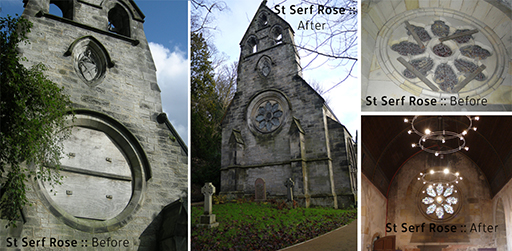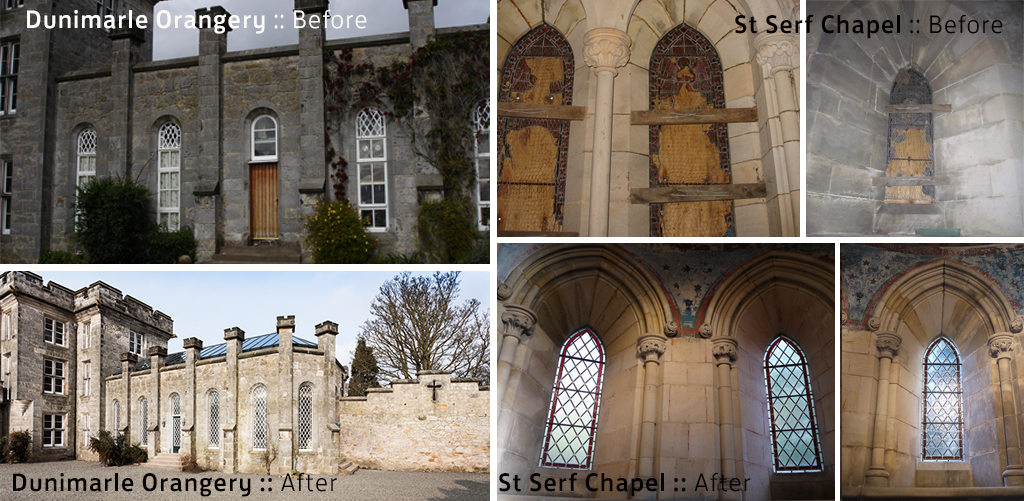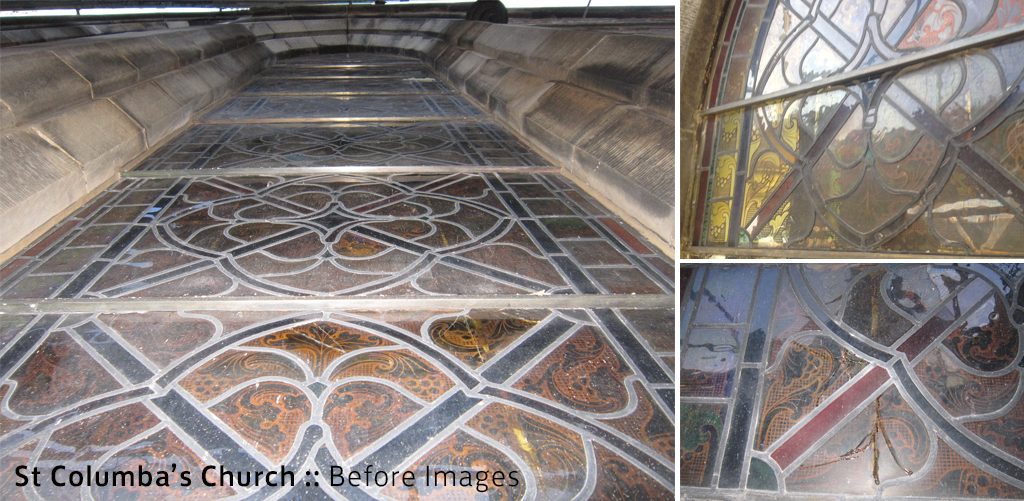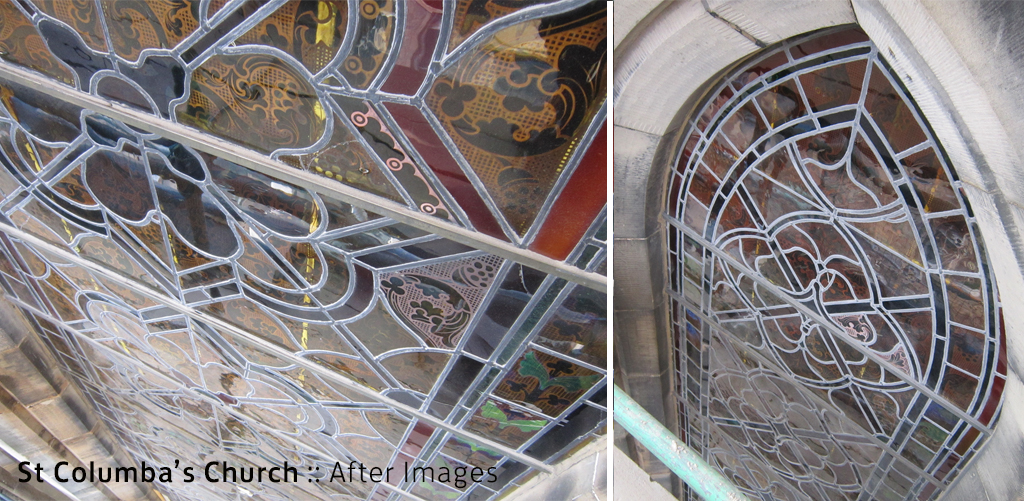Ian McKee : We are GLM
A Closer Look at Stained Glass Conservation
May 4th, 2015By David Gibbon MRICS MCABE
Before the art of creating larger panes of glass was perfected small pieces of glass connected together with lead strips was the best our forebears had. Subsequently leaded windows and stained glass have often been revived and they give an artistic feel to what might otherwise be a flat and lifeless plate glass window. As a consequence we often come across leaky, cracked, bowed and vandalised leaded windows and when we do we rely on the considerable skill of experts to bring them back to life. There are a few around.
There can be few more satisfying building conservation outcomes than a well put together leaded window in excellent repair.
At St Serf’s Chapel near Culross we were faced with a whole building’s worth of stained glass that was severely vandalised. Only a high level rose window remained to any extent and it had been badly damaged. The decision was taken to repair the rose window and to box up what remained of the other windows and store them on site and then to reglaze the window openings with plain diamond pattern leaded windows with just a hint of coloured glass in some of them. If, in years to come, someone felt that the original windows were worth restoring the building would have been protected meantime. However the remaining evidence was scant and we took the view that restoration would have been speculative at best.
New diamond pane windows were made and installed and the rose window was repaired with great skill by Roland Mitton.
At A Listed Dunimarle Castle we had to deal with an Orangery that had formerly had “zinc came” windows. Zinc cames are T shaped zinc profiles that were at one time used to glaze many buildings in Scotland but the technology is difficult for modern tradesmen to reproduce. Unlike leaded windows the glass is puttied into place externally and then the cames are painted. This gives the windows a distinctive appearance very different from leaded windows.
The windows in this case had been butchered with timber frame inserts when the Orangery was turned into a caretaker’s flat but our instructions were to turn it back into an Orangery. Scottish Stained Glass Studios rose to the challenge magnificently. They arranged to have T shaped glazing bars made to the size of the original zinc but in a stiffer than average alloy of lead and to brace the windows with well placed bronze bars. The end result is a set of windows with perfectly designed glazing that beautifully sets off the restored building. They also made new leaded lights along the same principles to restore the zinc came windows in a turret.
The stained glass windows at A Listed St Columba’s Free Church of Scotland on Johnstone Terrace in Edinburgh’s Royal Mile had been inexpertly repaired in the past but … [ask Louise] have made an excellent job of putting them back into first class order.






